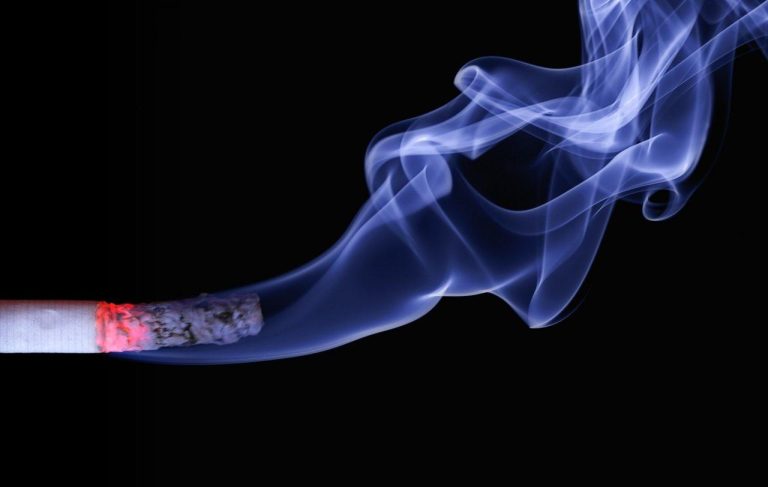Key takeaways
- Cigarette prices in Australia surged due to taxes
- A pack now costs around $40 on average
- Heavy taxes aim to deter smoking
- Smoking rates halved since 1995
- Quitting saves money and improves health
Rising Cigarette Costs and Their Impact on Smoking Rates in Australia
Over the past 30 years, the cost of cigarettes in Australia has steadily increased, driven by significant tax hikes aimed at deterring smoking.
Health advocates have successfully lobbied for these taxes and stringent regulations on tobacco advertisements. As a result, the 2022-2023 Australian Government Department of Health and Aged Care found the smoking rate between 14-50 year old individuals was 11.8% — almost half of what it was in 1995. According to the Australian Institute of Health and Welfare, 25% of participants in 1993 were daily smokers compared to just 8.3% in 2023.
But how much do cigarettes cost in Australia today? In this guide, we explore the current cost of a packet of cigarettes in Australia as well as historical price trends. We will also discuss future projections for the cost of cigarettes in Australia in 2024 and beyond.
How Much Does a Pack of Cigarettes Cost in Australia? A Timeline
The cost of cigarettes in Australia has steadily increased over the past few decades, driven largely by taxation aimed at reducing smoking rates.
Chat to an Aussie GP today
Friendly phone consultations
TGA-authorised Aussie doctors
Nicotine vaping scripts available
Early Years and Popular Brands
Since the 1940s, the New South Wales Retail Tobacco Traders’ Association has tracked the wholesale and recommended retail prices (RRP) of cigarettes from both international companies and smaller retailers. In the 1940s, ‘50s, and ‘60s, Craven A Cork Tip 20s was one of the most popular brands, and it remained available as recently as 2015.
Rapid Price Increases Post-1990s
From 1990 to 2000, the price of Craven A 20s nearly doubled. By 2015, the cost had increased 4.5 times to $22.72. This trend was consistent across other popular brands. For example, the price of Winfield cigarettes increased ninefold between 1980 and 2020, nearly tripling from 2010 to 2020.

How Much Do Cigarettes Cost in Australia in 2024?
As of 2023, a pack of cigarettes costs $40 on average. With the new taxes imposed in May 2023, the price of a pack is expected to rise to $50 by 2026.
To put these prices into context, a pack a day smoker (20 pack) would currently spend $12,775 (in 2023) on cigarettes per year. By 2026, they’ll be saving around $15,000.
Currently, a 25 pack of a leading brand sits at $48.95 at Coles, while a 20 pack of cigarettes sits around the $35 mark.
Using the 20 pack as our reference, a pack-a-day smoker currently spends $12,775 on cigarettes per year.
That’s a total of $127,750 over 10 years.
If you think of tax hikes as savings interests when you stop smoking, that’s truly a lot of cash!
The Health Cost of Smoking
The costs of smoking are both health-related and financial, but in many cases, it’s the physical price paid, rather than the money spent, that drives people to quit.
Widespread Health Impacts
Cigarette smoking has been linked to 19 types of cancer, seven forms of cardiovascular disease, asthma, and chronic obstructive pulmonary disease (COPD). Beyond these serious and life-threatening illnesses, smoking interferes with multiple bodily systems, resulting in a significantly impaired quality of life. When you smoke, you inhale over 7,000 chemicals and toxic substances, wreaking havoc on practically every organ in your body.
Nicotine and Addiction
Nicotine, the main addictive chemical in tobacco, changes the brain’s natural chemical structure, leading to addiction, dependency, heightened anxiety, depression, and mood swings.
Damage to the Lungs
Cigarette smoke causes enormous damage to the cilia, the hairlike structures that rid the lungs of debris and toxins. This makes breathing more challenging and affects the ability to move and exercise comfortably.

Impaired Blood Flow
Smoking affects blood flow throughout the body. The carbon monoxide and nicotine content narrows the arteries, limiting the amount of blood flow, and therefore oxygen, that is sent to the muscles.
Nutritional Deficiencies
Several chemicals in tobacco interfere with appetite, metabolism, and hunger receptors, causing dangerous nutritional deficiencies and weight fluctuations.
Skin Concerns
Tobacco use can cause several skin concerns and conditions. The tar in cigarettes is responsible for the yellowing of fingers and nails. The chemicals in tobacco deplete collagen and elastin fibres in the skin, resulting in premature ageing. Nicotine also affects the immune system, inflammation, and skin cell growth, leading to skin conditions including eczema and psoriasis.

Why Has the Cost of Cigarettes in Australia Increased? Tax Laws Explained
So, why has the cost of cigarettes risen so significantly in the last 30 years?
Taxes are largely responsible for the change. The level and nature of tobacco duties, fees, and taxes have traditionally been the main determinants of the final retail price of cigarettes (as opposed to production costs or marketing factors that determine the costs of most other consumer goods).
The cost of the raw materials, manufacturing processes, promotional activities, and distribution of tobacco products only determine the final profits for tobacco growers, manufacturers, wholesalers, and retailers rather than the price of the cigarettes themselves.
In Australia, heavy tobacco taxes have prompted a spike in the price of not only cigarettes but all other tobacco products.
The History of Tobacco Excise Taxes
There have been a number of major changes in tobacco taxation from the 1940s to 2020.
Tobacco Taxes from 1901 to 1990
Since the 1901 Excise Act and Customs Act, the federal government has imposed excise taxes on Australian-made tobacco products and customs duties on imports. Initially, these taxes were based on the weight of the tobacco products, including the paper and filter but excluding packaging.
Key Changes in the 1980s
In 1983, tobacco taxes were linked to the Australian Consumer Price Index (CPI), causing automatic biannual increases. The duty rates for cigars and non-cigarette tobacco were also adjusted, with the latter seeing a $5 per kilo increase. Between 1984 and 1986, the tax rate for tobacco products increased further.
Equalisation of Taxes
Previously, Australian-produced tobacco was taxed at a lower rate than imported tobacco. However, in 1994, excise taxes and customs duties were equalised.
Tobacco Taxes from the 1990s – 2010
In the mid-1990s, major state fees and taxes were introduced, significantly raising cigarette prices. Health bodies successfully lobbied for federal excise tax increases, leading to several ad hoc tax hikes between 1990 and 2000.
Notable increases included a $5 hike in 1992, a 3% increase in 1993, and 5% increases in 1994 and 1995. The final planned increase of 5% in August 1995 was brought forward to May and raised to 10%. From 1999 to 2010, tobacco tax increases were limited to biannual CPI adjustments.
Cigarette Taxes Post-2010
In 2010, cigarette taxes saw a major increase, with a 25% hike in April. From 2013 to 2020, annual tax increases of 12.5% were implemented alongside biannual CPI adjustments. By 2021, the price of a leading cigarette brand was 8.5 times higher than its 1940 price, adjusted for inflation.
Recent and Future Increases
In May 2023, the government announced annual 5% price increases for cigarettes until 2026. This means a pack costing $40 in 2023 will cost approximately $50 by 2026. The aim is to raise $3.3 billion for federal programs, including smoking cessation campaigns.
The price hike is playing a significant role in deterring people from continuing to smoke, or from picking up a cigarette in the first place. For example, the smoking rate among adults halved between 1995 and 2019.

How Much Money Will I Save If I Quit Smoking?
If you’re struggling with bothersome withdrawal symptoms or looking for an incentive to quit, here’s a breakdown of the potential savings and health benefits at various milestones:
One Day Not Smoking
- Savings: $35
- Health Benefits: Blood pressure and heart rate normalise; improved circulation; reduced carbon monoxide levels; decreased heart attack risk.
Two Days Not Smoking
- Savings: $70
- Health Benefits: Lungs start to function better; improved sense of taste and smell as nerve endings begin to heal.
One Week Not Smoking
- Savings: $245
- Health Benefits: Reduced nicotine withdrawal symptoms; improved mood; increased antioxidants in the blood. This is certainly a milestone to note — smokers who make it one week without smoking are nine times more likely to successfully quit.
Two Weeks Not Smoking
- Savings: $490
- Health Benefits: Easier breathing; reduced mucus production in lungs.
One Month Not Smoking
- Savings: $1,050
- Health Benefits: Improved skin appearance; less yellowing around fingernails; clearer sinuses; better lung function and exercise capacity. Read this blog for more information about what to expect at the one-month mark.
Three to Six Months Not Smoking
- Three Months Savings: $3,150
- Six Months Savings: $6,300
- Health Benefits: Faster recovery from wounds and infections; improved mood; less stress; reduced coughing.
After One Year Not Smoking
- Savings: $12,775
- Health Benefits: Lower risk of diabetes and certain cancers (liver, stomach, colon, rectum, pancreatic); risk of coronary heart disease is halved.

The Growing Costs of Cigarettes in Australia: 2024 and Beyond
The Australian Government plans to continue to reduce the affordability of tobacco products from 2022 to 2030.
For example, the newly imposed taxes in 2023 will increase tobacco prices by 5% each year up to 2026. This means that the cost of a packet of cigarettes in Australia will cost around $50 by the time.
Regarding the cost of cigarettes in Australia in 2024, a pack-a-week smoker could spend between $33,605 and $45,000 annually.
By 2030, experts expect a 30-pack of cigarettes to cost $100.
The financial and health burdens of smoking are significant. Quitting is challenging, but many tools, strategies, and resources are available to help you succeed.
Consult a GP
GPs can guide you through the best practices and the most effective path throughout. GPs have helped numerous quitters to stop smoking with tailor-made smoking cessation programmes.
GPs may prescribe NRT tools to help you manage your withdrawals – an important component of any quit journey.
However, GPs also know that NRT products might not be enough to keep your cravings and withdrawals at bay. They may decide to prescribe pharmacy NVPs as a second means to help you stop smoking for good.
More About NVPs
Based on your GP’s evaluation, after NRTs prove to be ineffective, they can prescribe NVPs to help you quit. NVP products sold in pharmacies are made under stringent pharmaceutical standards on the manufacturing process and ingredients, are toxicologically assessed for inhalation, are locally insured, and are specifically designed to help you stop smoking.
The latest Cochrane Review found high-certainty evidence that NVPs are more effective than NRTs in helping people stop smoking.

Quit Smoking and Save Money Today
The cost of smoking in Australia isn’t worth the toll on your health and finances. With cigarette prices set to rise further, a single 20-pack could soon cost as much as your utility bills. The best way to save money for important expenses like university fees, savings, and emergencies is to quit smoking.
We know you’re reading this because you want to know if it’s worth paying the cost of smoking. It isn’t, and we can help you quit entirely.
Smokefree Clinic gives you access to many medically reviewed and trustworthy resources that can inform and aid you in your path to wellness, so have a look around!
If you’re ready to get started, Smokefree can connect you to Australian healthcare professionals who excel in helping patients quit smoking for good.





